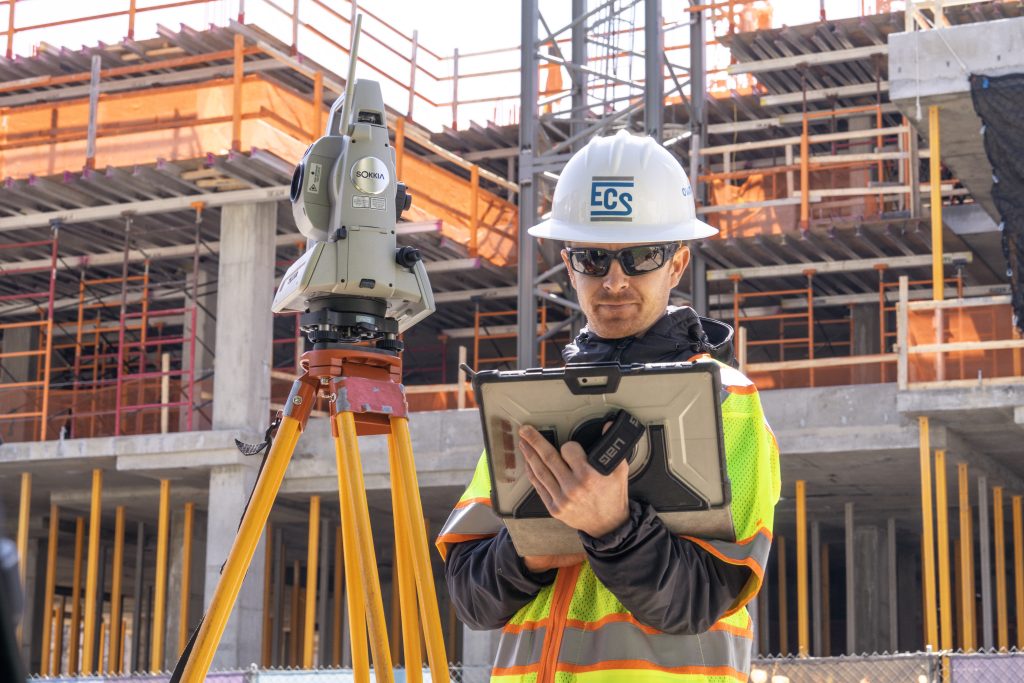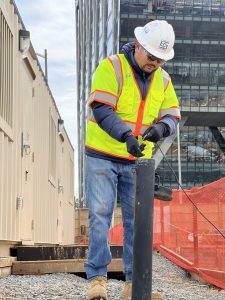By Christopher Schlafer, E.I.T.
Chris earned a bachelor’s and master’s in Engineering with a focus in Geotechnical Engineering from the University of Louisville in Kentucky. Having worked with the ECS monitoring and instrumentation team for 11 years, he has assisted in the growth of the monitoring service line utilizing all types of instrumentation.
What is Geotechnical Instrumentation & Monitoring?
There are numerous reasons a construction team may need geotechnical instrumentation and monitoring on their job site. Whether it be for measuring displacements of adjacent buildings, utilities, and excavation support systems in urban and suburban environments, or slope failures and dam construction in rural or semi-suburban areas, there is always a piece of equipment or methodology that will assist in accomplishing the measurement and performance evaluation of these systems.
Geotechnical Monitoring Instruments
The following types of instruments offer several applications on a jobsite, including positional monitoring, inclinometer and/or tilt monitoring, vibration monitoring, and water level or pore pressure monitoring.
Total Station
Total stations are most often used in positional monitoring, including in the measurement of excavation support systems and adjacent structures, settlement of fills and movement measurements of critical infrastructure. Manually operated or automated with the use of robotics, the laser acquired measurement functionality, allows easy data collection from long range setups to adjacent buildings, structures, support of excavation systems.
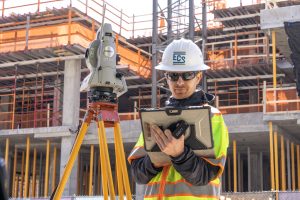
With positional monitoring, the equipment is used to collect reference measurements on target coordinates outside the movement zone-of-influence (ZOI) of excavations or other movement zones. These measurements are then compared with measurements of coordinates inside the ZOI to calculate any displacements of structures. Any exceedances or trends outside of project specific thresholds are relayed to the project team. With the capability to automate, data collection with real-time exceedance alerts to project teams can be employed.
Inclinometers & Tilt Meters
Inclinometers and tilt meters are both used to measure excavation and structural displacements. Typical use cases include measuring the performance of excavation support systems during excavation and construction, installation in landslide or slope failure zones, structural building monitoring for tilt, and along retaining walls (solid concrete, segmental, etc.).
Inclinometers
Inclinometer monitoring systems include a manual probe or in-place sensors, cable and cable reel, and data collection readout. With manual inclinometer readings, the probe is put into an installed semi-rigid casing behind an excavation support system (or within a failing slope), and readings are taken at a specific interval vertically behind the wall (within the slope). These readings of “tilt” are then compared with initial readings and a profile graph of lateral displacement can be produced.
Tilt Meters
Similarly, tilt monitors, are affixed to the structures and used to measure the tilt of the wall or other structural member, which can then be graphically plotted and compared with the baseline (initial) tilt and then compared again with project-specific movement criteria.
Piezometers
Piezometers can be used in a variety of construction applications, both urban/suburban and rural. Applications include large soil fill sites, excavations with slurry walls to monitor the performance of the slurry against water intrusion, dam construction to monitor the performance of the dam against weep, and water level changes with dewatering operations etc.
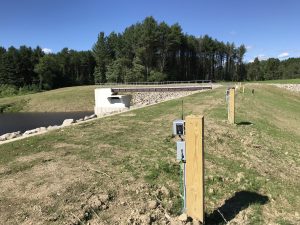
Piezometers consist of a small cylindrical tube with a diaphragm (plunger), and electrical measurement devices within the rest of the body of the device. When inserted into a water level pipe, or grouted in-place in soil/slurry, these devices measure water levels or pore water pressure. The amount of pore water pressure, for instance, can then be compared to the initial pore water pressure to understand the changing subsurface conditions and effective stresses.
Vibration Monitors
Vibration monitors are typically used in measuring construction related vibrations in adjacent buildings or other on critical elements to minimize the effects of these vibrations. Typical use cases include monitoring of adjacent structures during adjacent demolition, pile driving, general construction related vibrations, rock blasting, etc.
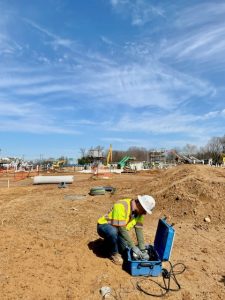
Vibration monitors (seismographs), consist of a geophone connected to a small data collecting readout. The devices record vibrations over a set period each day and can be programmed to provide email alerts, and record vibrations exceeding a project specific threshold limit.

